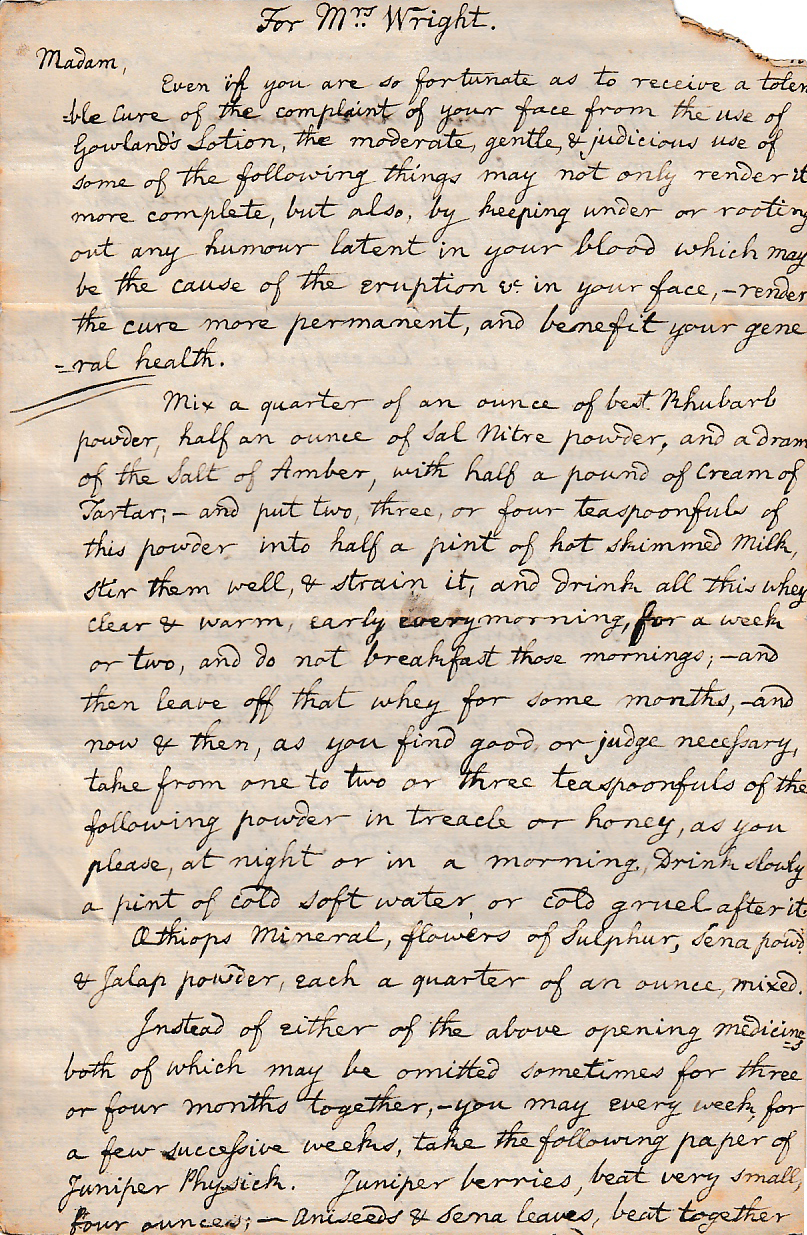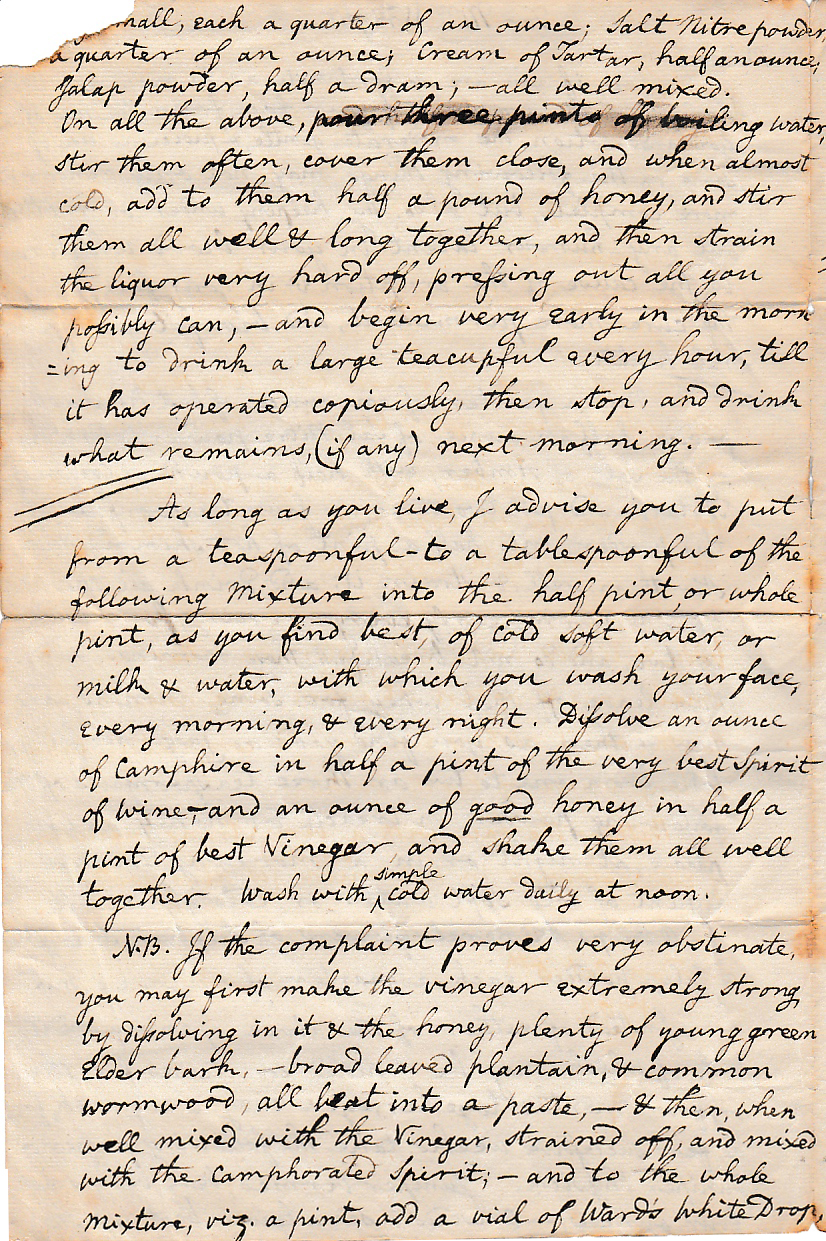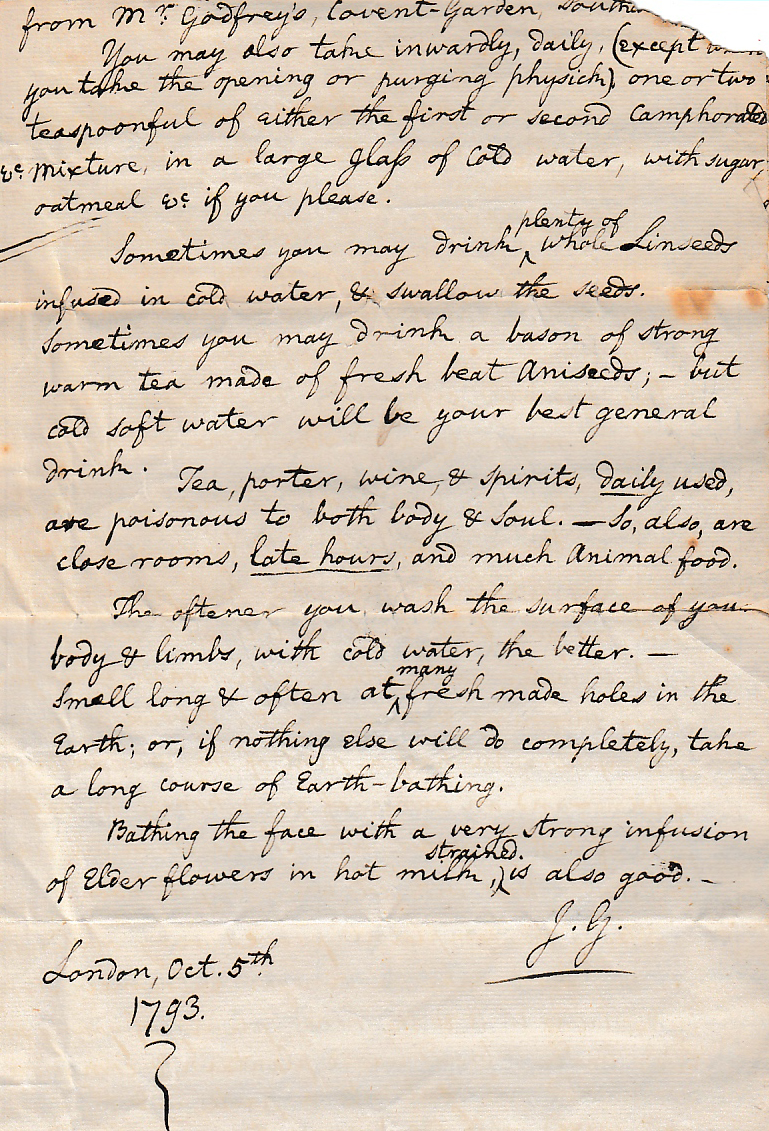



Quite how the George family came to possess this document is quite unknown. James Graham had become quite notorious by the the time
it was written, and it's not hard to see why someone would keep it as a 'curio'.
James Graham, son of a saddler, was born in 1745 in Edinburgh, where he trained in medicine, but left medical school
without taking a degree. Graham set up as an apothecary in Doncaster, Yorkshire, and in 1764 he married Mary Pickering.
They had three children.
In 1770 Graham left England for America, travelling around as an oculist and aurist before settling in
Philadelphia. Here he learned the principles of electricity from Ebenezer Kinnersley, Benjamin Franklin's friend and
collaborator, and began to develop the prototype of his Celestial Bed. Leaving America around the time of the first
rumblings of the American Revolution, he worked briefly in Bristol and then Bath before setting up practice in London.
After travelling in northern Europe in 1776, Graham set up practice in Bath, Somerset. During a further research tour of
Europe in the summer of 1779, Graham acquired a new patron in Lady Spencer, mother of Georgiana, Duchess of Devonshire.
In 1780 Graham opened his first Temple of Health, housed in the centre of the Adam brothers' Adelphi development. He displayed
elaborate electro-magnetic apparatus, treated patients with musical therapy and pneumatic chemistry as well as
electricity and magnetism, published marriage guidance material, gave medical
lectures and sold medicines. He performed with the help of a succession of Goddesses of Health, displayed as models of physical
perfection. A later rumour stated that the young Emma Hamilton (then known as Emy Lyon), was employed as the goddess Hebe Vestina.
The Temple of Health was a success and Graham became the talk of London, featuring in satirical plays, poems, prints and newspaper
skits. During the 1780s he was publicly associated with society figures.
In June 1781 Graham launched the Temple of Hymen in new premises in Pall Mall, designed to house the newly
built Celestial Bed. His "wonder-working edifice" was 12 by 9 feet, and canopied by a dome covered in musical
automata, fresh flowers, and a pair of live turtle doves. Stimulating oriental fragrances and "aethereal" gases were released
from a reservoir inside the dome. A tilting inner frame put couples in the best position to conceive, and their movements set
off music from organ pipes which breathed out "celestial sounds". Here Graham gave his Lecture on Generation, a frank explanation
of how to conceive, which saw sex as a patriotic act and procreation as a national duty. Cold water washing of the genitals was
recommended as essential to good sexual health, and prostitution and masturbation were castigated.
Graham was soon in financial difficulties. By 1784 he was forced to sell most of his possessions. He returned to Edinburgh,
to display the remains of his apparatus in a temporary Temple of Health on South Bridge Street.
Graham had developed from the 1770s another therapy, which he called "earth-bathing" in a 1790 pamphlet. In 1786, he gave public
exhibitions of earth-bathing in Panton Street in London, and lectured buried up to the neck in earth.
From the mid-1780s Graham preached, and opposed the religious views of Joseph Priestley. At times he was confined to his
house as a lunatic. At the end of 1792, Graham began to experiment with extended fasting to prolong his life. He died at his
home in Edinburgh in 1794.
Source: a fuller, Wikipedia article